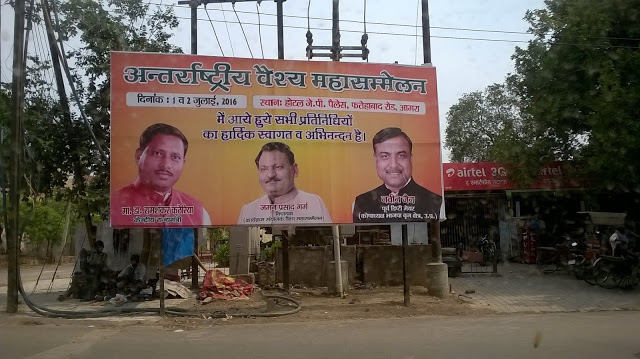
Varna assertion for Savarna domination: How Savarna identity is normalized at the expense of constitutional ideals

In this piece, Sumit Chaturvedi analyzes the methods used by upper caste groups in India to assert their particular caste and varna identities. He argues that upper-caste groups are using conferences, publications, social media and advertizing to reconsolidate their identities and recruit followers, and in doing so, are building identities that can be mobilized very quickly in the digital age. Further, he points out that this redeployment of caste identities is contrary to constitutional values and is being done with the express purpose of consolidating an overarching savarna identity that has as its basis the suppression of Dalit groups. He calls this a new type of “savarna assertion” which in no way challenges caste oppression and instead does the exact opposite – it legitimizes and enables caste violence and oppression.
A hoarding for the Vaishya Mahasammelan organised in 2016 in Agra that features three prominent BJP politicians. Photo courtesy: Sumit Chaturvedi Introduction Prevalent mainstream discourses on caste dynamics and politics tend to revolve around vulnerable caste groups. However, there is not enough scrutiny and interrogation of how dominant caste groups design their politics and power dynamics. Suraj Yengde in the introduction to his book Caste Matters writes, “By choosing to remain silent, the dominant castes effectively practise a thinly veiled ‘caste terrorism’ by pleading ‘ignorance’ over caste issues. The ‘ignorance’ is practised; it is intentional to not have to face up to reality and instead continue living in a cocooned world. Therefore, their problems become the rest of the world’s problems” (Yengde, 2019: 10). This approach of not questioning caste privileges feeds into a “casteless-ness” narrative. Dominant castes use it to create an impression that, while vulnerable caste groups engage…
Related Posts


Donald Trump’s Master Economic Plan I Opinion by Yanis Varoufakis




